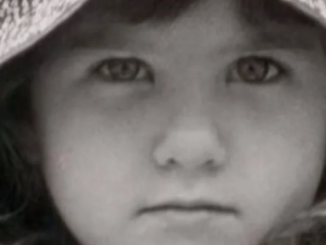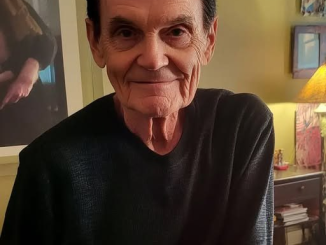David Cassidy, despite his struggles with substance abuse and frequent legal issues, believed he was a good father to his son. He once talked openly about their relationship and shared what he told his child after finding out he had a mental illness.
David Cassidy became famous as a teen idol when he starred as Keith Partridge on the hit 1970s show “The Partridge Family.” On the show, he played the eldest sibling in a family that performed music together. His real-life stepmother, Shirley Jones, also starred in the series, playing the role of the mother.
David Cassidy’s rise to fame began with the success of “The Partridge Family,” which led to the release of eight studio albums. Although many cast members were part of the show, only David and Shirley Jones, his real-life stepmother, provided the vocals. Interestingly, David was chosen for his role because of his looks, but he soon became the lead singer on the albums.

However, David’s fame soon became a burden. Unlike many teen idols who get tired of fame over time, David resented it from the start. He wanted to be seen as a serious actor but felt trapped in his role as Keith Partridge.
In the 1980s, David admitted, “I was pigeonholed as a teen idol, and there’s no credibility.” He also talked about the personal toll fame had on him, calling it “a very empty, isolated, lonely existence.”

David’s fame isolated him, but it also led to struggles with substance abuse. In 2008, he admitted that he had a problem with alcohol. This was followed by legal trouble, including a DUI charge in 2010 and two more in 2013 and 2014.
In 2014, David entered rehab to address his addiction. By 2015, he had to file for bankruptcy and faced charges for a hit-and-run later that year. In an interview on the “Dr. Phil” show, David revealed that his drinking had hurt his relationship with his son, Beau Cassidy.

“I was the ideal father. I would do anything for him. He’s the love of my life and probably the reason I didn’t kill myself. Because of him,” David said. He also had a daughter, Katie Cassidy.
In 2017, David’s challenges deepened when he announced he had been diagnosed with dementia. Both his grandfather and mother had suffered from the disease, and David admitted, “I was in denial, but a part of me always knew this was coming.”
Reflecting on his mother’s battle, David remembered, “In the end, the only way I knew she recognized me was with a single tear when I walked into the room.” This memory filled David with fear that he would suffer the same fate.
David shared his deepest fears with his son, Beau, telling him, “Promise me you’ll find a way to let me go. Don’t let me live like that.”
Tragically, David passed away in November 2017 at the age of 67 due to organ failure. He had been hospitalized in Florida for several days, and his kidneys and liver failed.
David’s publicist, Jo-Ann Geffen, confirmed his death, sharing a statement from the family: “It is with great sadness that we announce the passing of our father, our uncle, and our dear brother, David Cassidy. David died surrounded by those he loved, with joy in his heart and free from the pain that had gripped him for so long.”
Despite the challenges he faced, David’s estate turned out to be worth more than expected. His son, Beau, inherited nearly $1.68 million, including $230,000 in assets, $450,000 from David’s retirement plan, and a $1 million life insurance policy. David had left most of his estate to Beau, excluding his daughter Katie.
David’s love and pride for his son were clear, especially as Beau followed in his footsteps to pursue a career in entertainment. In a 2012 interview, David reflected on fatherhood, saying, “As a father, I do everything my dad didn’t do. My son Beau’s birth changed my life. I’ve gone to every baseball and basketball game, every performance.”
David was proud when Beau left college to follow his dream of becoming a musician. Beau formed a band called the Fates, and David was excited about his son’s future success.
Beau continued to make a name for himself, even participating in “The Voice.” He was praised as “a really talented performer.”
Fans on social media also noticed Beau’s striking resemblance to his father, often commenting on how similar they looked.
One fan said, “Beautiful smile, young man… keep happy and creating your music,” while another noted, “Just as handsome as his father.” Others echoed similar sentiments, calling Beau “a Handsome Young Cassidy” and commenting, “You look just like your handsome Dad, David!”
David Cassidy’s life had its ups and downs, but his love for his son, Beau, never wavered. Despite the struggles he faced, from teen idol fame to battling addiction and illness, David’s legacy lives on through Beau, who continues to carry on his father’s musical talent and charm.
DEVASTATING NEWS ON TRUMP LEAVES …
Former President Donald Trump released a brief health report from his doctor, Dr. Bruce Aronwald, asserting that his health is “excellent” and noting weight loss attributed to an “improved diet” and regular exercise.
However, the report lacks critical specifics, such as Trump’s weight, blood pressure, cholesterol levels, prescriptions, and the exact amount of weight lost.
Historically, Trump’s health reports have been vague, often including exaggerated claims, such as being the “healthiest individual ever elected to the presidency,” while omitting important details. In contrast, President Biden provides more comprehensive health reports, though they have not fully alleviated concerns about his age and overall health.
Both Trump and Biden face scrutiny regarding their capability to serve another term due to their age, with polls indicating voter concerns about their fitness for the presidency. Trump has particularly emphasized his cognitive test results as evidence of his mental acuity.



Leave a Reply